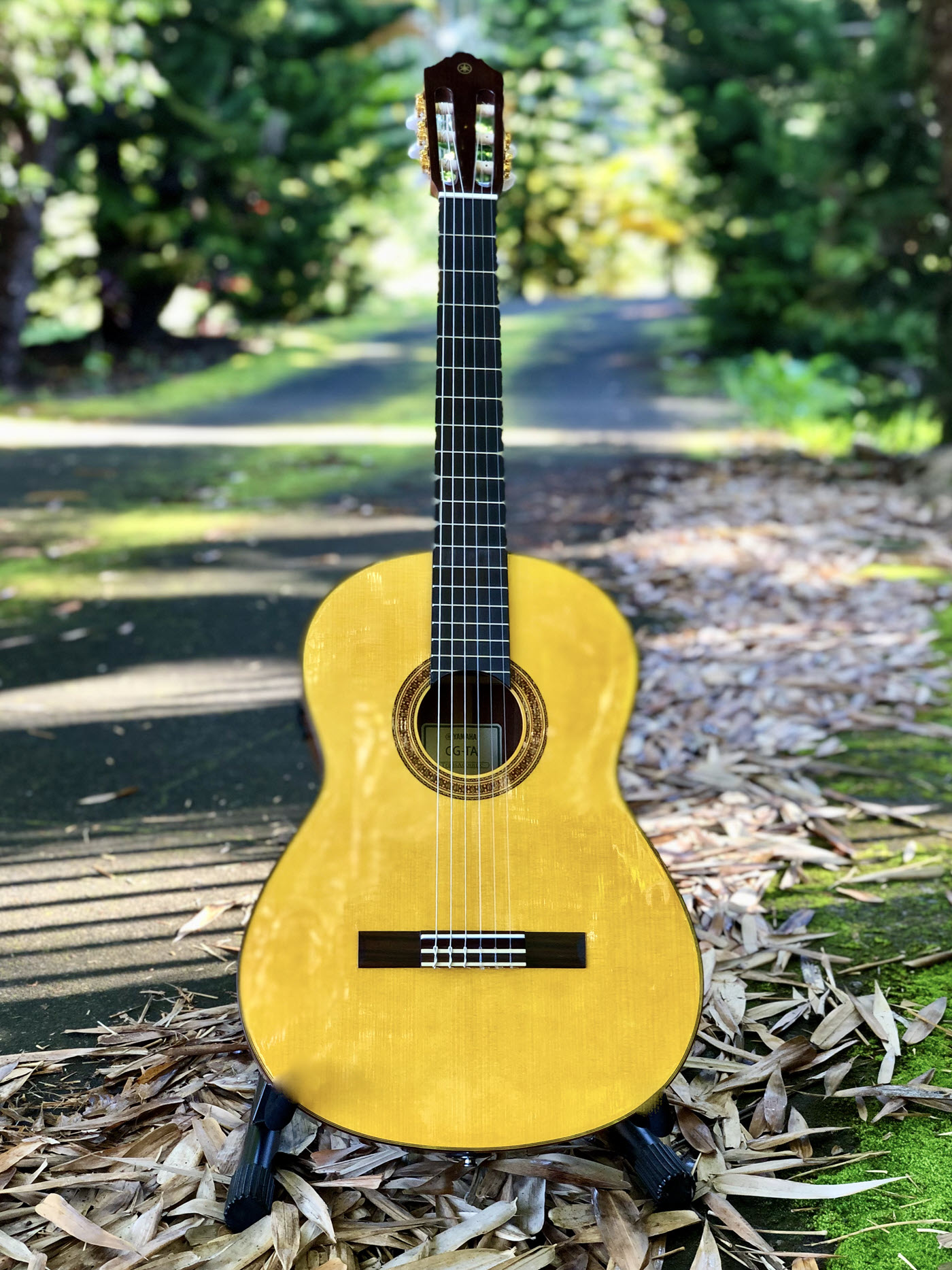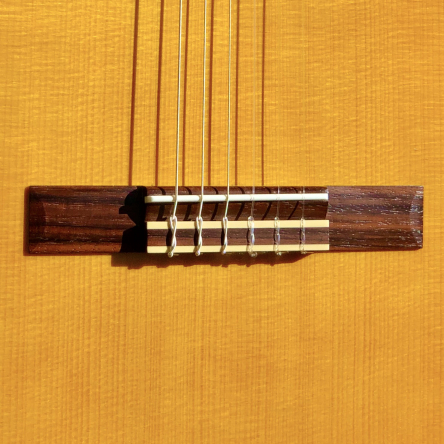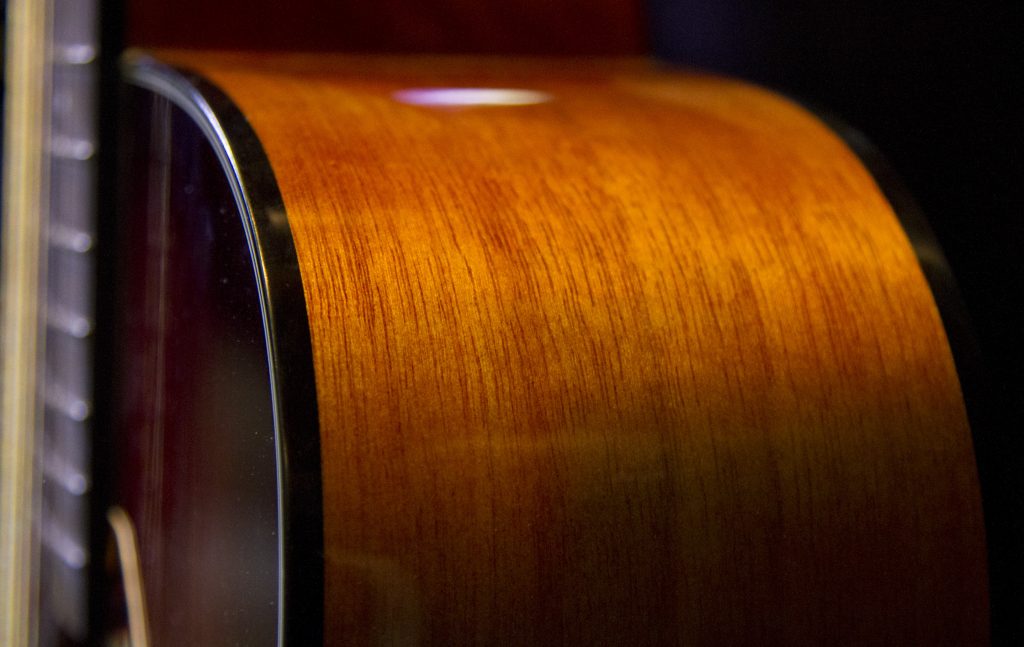Tips for Playing Nylon-String Guitar
Here’s how to get the most out of your instrument.
As a musician, I rely on my cache of instruments to create the tones and textures needed for each individual recording session, project and performance.
Could I play most pieces of music on just one guitar? Probably, but certain instruments produce tones that are more appropriate for certain genres of music, arrangements and mixes. That said, choosing the right acoustic guitar will largely come down to experience, taste and price. Let’s take a look at some of the most important factors that differentiate between guitar types.
Size
Body shape and size have a major impact on an acoustic guitar’s projection and tonality. A compact parlor-size instrument, for example, is great for finger-style passages and blues slide, while a larger concert-size model is excellent for fingerpicking, strumming and accompanying a singer-songwriter.
Sound
In general, steel-string guitars produce a bright, focused sound, while nylon-string guitars are typically softer- and warmer-sounding. Of course, nylon-string guitars can be quite dynamic when played in flamenco and Latin styles, but generally speaking these instruments will have less presence than their steel-string cousins.
A big factor in this is the type and combination of tonewoods used. Quite often, classical guitars will have tops made of cedar, as opposed to spruce, which is typically used for steel-string acoustic instruments. Traditional classical guitars also usually feature “chunky” necks and wider fingerboards with a flat radius. (Yamaha NTX nylon-string models are the exception; they offer a neck profile closer to that of an electric guitar.)
String Tension
String tension is considerably less on nylon-string guitars than on steel-string models, meaning that the strings will be softer on the fretting hand fingertips. (We all know how painful it is to practice before we’ve built up those hard skin calluses!) That’s one reason why nylon-string guitars are particularly well-suited for beginners.
Musical Genre
Steel-string acoustic guitars personify the sound of country music, and are also frequently used in pop and rock. Nylon-string guitars have been used throughout history in almost every musical genre. We may associate it more with classical, flamenco, Latin, jazz and folk music, but a well-played nylon-string guitar can sound exceptional in any genre, when used in the right context.
Nylon-String Guitar Playing Tips
1. Use the correct picking hand technique. I’m a bit of a traditionalist when it comes to picking techniques on nylon-string guitar. For one thing, I use my fingers almost exclusively — even for single-note lines — as opposed to using a pick. For that reason, I keep my nails long in order to achieve a clean and crisp sound for chordal parts and subtle melodies … and if I strum the strings, I use the back of my fingernails and thumbnail in a downward and upward motion, similar to the way a pick held between the fingers and thumb is used.
Of course, you can use a pick if you’d like to, but I think you’ll find it takes away from the desired tonality of the instrument. However, if you have an intricate solo line that’s just too hard to articulate with your fingers, try using a medium-heavy or extremely heavy nylon pick that allows for a smooth sound and string attack, as if you were using your fingers.
2. Use the correct fretting hand technique. For the cleanest tones, it’s always best to keep your fretting hand fingers directly facing the fretboard. You should find this a little easier to achieve on a nylon-string guitar than a steel-string model due to the wider fretboard and string spacing.
Also, when playing a nylon-string, vibrato on single notes is typically achieved with a side-to-side motion instead of the up-and-down motion used on steel-string guitars.
3. Use the right touch. Generally speaking, you’ll want (and need) to play with a lighter touch on a nylon-string than on a steel-string. Take some time getting used to this new dynamic before embarking on a gig or session.
4. Set the action sufficiently high. Playing a nylon-string guitar with a low action will require a seasoned playing technique to produce a clean sound without the strings slapping against the fretboard in an undesirable fashion.
5. Choose the right strings. Gauges of nylon strings are measured in tension rather than thickness; you can choose between light, medium, normal, medium-hard and hard tension strings. If you are new to the classical guitar, I’d recommend choosing normal tension strings until you develop a style that requires an alternate string set. If your style requires a more dynamic sound, or you have extremely strong hands, try using a harder tension string.
By the way, nylon strings won’t come supplied with ball-ends to secure the string at the bridge. A tying technique is employed for this, and it may take some time to get it right. Nylon strings will also need to be fed through the slot-head design and secured around the tuning post to stop the strings from slipping once tuned. (See illustrations below.) You’ll notice that the silver-wound sixth, fifth and fourth strings will stay in tune overnight, but the other (all-nylon) strings often detune quickly when not in use.
The Video
All the guitar parts in this video were performed on nylon-string instruments. The finger-style rhythm parts in the video were played on my trusty Yamaha NCX1200R (sadly now discontinued) — its larger body size and distinctive tonewoods yield an extremely well-balanced, warm sound for chordal passages. I double-tracked those parts direct to the recording software, where I added some light compression and ambient reverb.
The dynamic intro and top-line melodies in the video were played on a Yamaha CG-TA TransAcoustic nylon-string guitar. Its smaller body size and slightly higher string tension were perfect for those brighter, expressive phrases that stand out from the underlying rhythm part. I miked the CG-TA at the neck join using a pair of condenser microphones in an X/Y pattern, using a touch of the onboard hall reverb for the melodies to give those single-note lines more sustain and acoustic presence in the mix.
In the introduction, I’m articulating the descending and ascending legato scale runs with my thumb and fingers, but I’m playing the chord accents with the nails on my picking hand. This downward fast arpeggiation allows the notes in each chord to ring out distinctively, from low to high.
The melodies in the main body of the piece are also articulated with my picking-hand fingers and thumb. I’m outlining the Fma7(#11) and E7 chords with double-stop sixths to accentuate that E Phrygian modality. The Phrygian mode is often used and associated with Latin styles for its exotic sound.
The Guitar

The CG-TA features an ovangkol back and sides, an Engelmann spruce top, and a rosewood fingerboard and bridge. For those of you who aren’t familiar with this technology, TransAcoustic guitars feature onboard effects that are available even when the guitar isn’t plugged in (they appear at the instrument’s output jack too, courtesy of the built-in piezo pickup), making them perfect for ambient inspiration anywhere you go. These effects include sweepable room and hall reverb, plus a dedicated chorus that adds anything from subtle to extreme amounts of modulation to the sound.
The Wrap-Up
Every guitar player should own a distinct palette of instruments, as tonal options and variations will quickly become a part of your unique sound. Adding a nylon-string guitar to your arsenal will require (and inspire) new ways of performing, but you’ll be rewarded with an expressive and eloquent “voice” that will help broaden your sonic horizons.
Photographs courtesy of the author.
Check out Robbie’s other postings.
Click here for more information about the Yamaha CG-TA TransAcoustic nylon-string guitar.

















